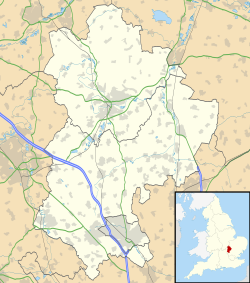| Kempston Hardwick | |
|---|---|
 Railway bridge and cottages at the south-east end of the village | |
Location within Bedfordshire | |
| OS grid reference | TL030484 |
| Civil parish | |
| Unitary authority | |
| Ceremonial county | |
| Region | |
| Country | England |
| Sovereign state | United Kingdom |
| Post town | BEDFORD |
| Postcode district | MK43 |
| Dialling code | 01234 |
| Police | Bedfordshire |
| Fire | Bedfordshire |
| Ambulance | East of England |
| UK Parliament | |
Kempston Hardwick is a small hamlet on the edge of the town of Kempston in Bedfordshire, England. Historically it was one of the hamlets or "ends" scattered across the parish of Kempston. It is served by Kempston Hardwick railway station on the Marston Vale Line, which was one of the least-used stations in the UK railway network. [1]
